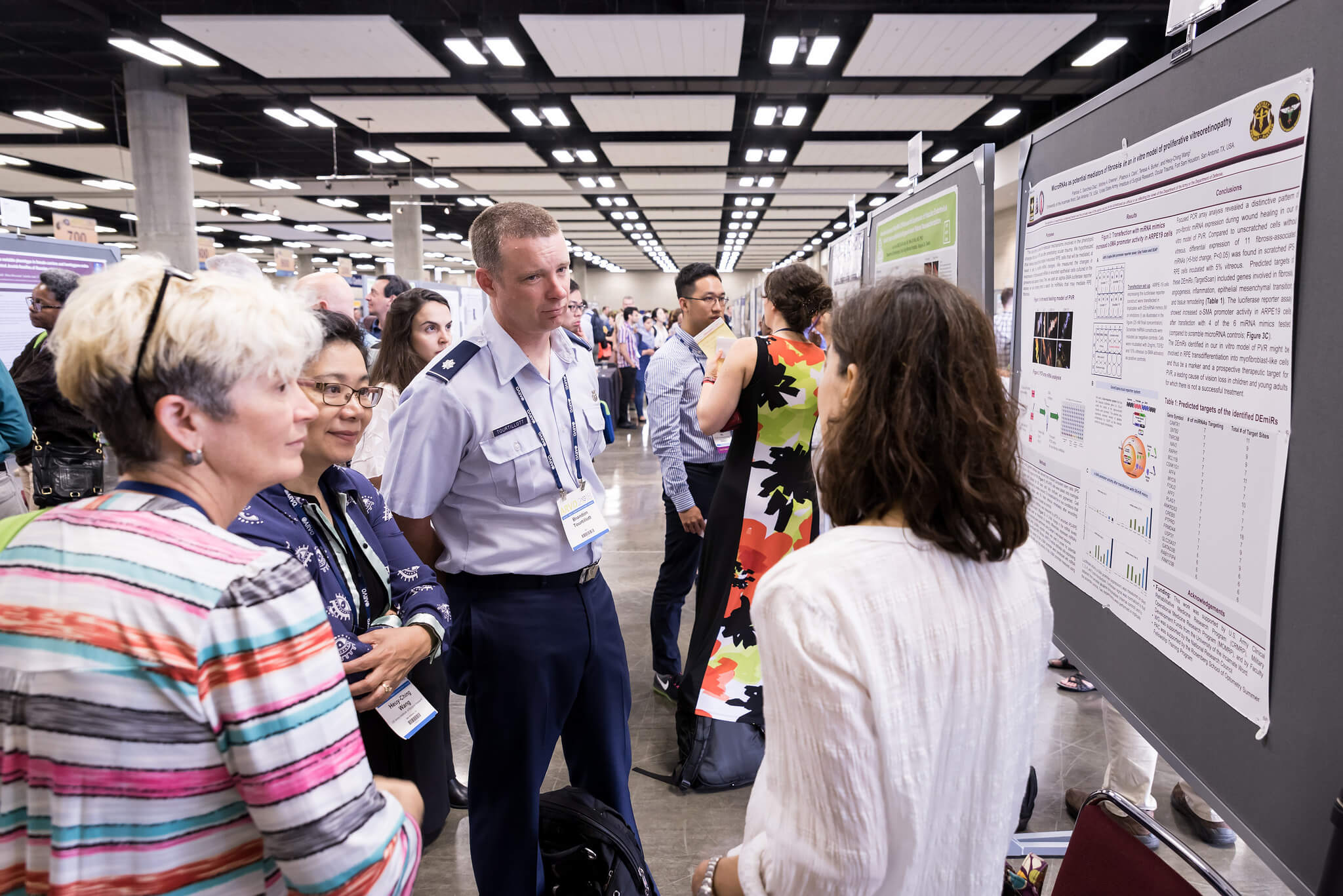Members-in-Training Outstanding Poster Awards

MIT First Authors of the top five (5) scored abstracts scheduled as Poster presentations from each Scientific Section and Cross-sectional Group are eligible for consideration as award recipients and invited to participate in the MIT Outstanding Poster Award Competition held at the ARVO Annual Meeting.
One award recipient is selected from each Scientific Section and Cross-sectional Group. Award recipients will be notified via email.
To be eligible for the MIT Outstanding Poster Award
- You must be an ARVO MIT member paid through the current year.
- You must submit an abstract for the current Annual Meeting as First Author.
- As part of your abstract submission process, you must indicate that you want to apply for the MIT Outstanding Poster Award.
- You may apply for the MIT Outstanding Poster Award, a Travel Grant, and the ARVO Foundation Early Career Clinician-Scientist Research Award.
- Your abstract must be accepted for Poster presentation at the current Annual Meeting.
- Your abstract must receive one of the top five (5) review scores given by the reviewing Scientific Section or Cross-sectional Group to MIT First Authors who have applied for the award and whose abstracts have been accepted as Poster presentations.
- Eligibility Acknowledgements will be sent to the First Authors of the top five scores from each Section/Group.
- Eligible First Authors must accept their eligibility and confirm their participation in the session.
- On-demand presenters are not eligible for these awards.
Congratulations to the 2025 awardees
Anatomy and Pathology/Oncology — Guoqing Wang
Injectable hydrogel-mediated co-delivery of oncolytic adenovirus and melphalan for retinoblastoma control and vision preservation
Biochemistry/Molecular Biology — Xiaoyang Li
Quantitative proteomic analysis of tears from a Sjögren's disease mouse model
Clinical/Epidemiologic Research — Faye Ng Yu Ci
Comparison of deep-learning based retinal imaging biomarkers for their association with incident cardiovascular diseases
Cornea — Parisa Dashti
Reversibility of Treg dysfunction in mice after short-term versus long-term exposure to desiccating stress
Eye Movements/Strabismus/Amblyopia/Neuro-Ophthalmology — Randolph Kwaw
Investigating dose dependency of retinal inactivation following intravitreal injection of Tetrodotoxin (TTX) in the non-human primate.
Genetics Cross-sectional group — Soo Hyun Kim
Expression of genes in novel associated loci for central serous chorioretinopathy point to endothelial cells and sclera as tissues involved in its pathogenesis
Glaucoma — Neda Nilforoushan
Diagnostic likelihood ratios for glaucoma detection with the M2M-derived RNFL thickness from fundus photographs
Immunology/Microbiology — Prince Kumar
Zika virus triggers Golgiphagy and remodels the Golgi apparatus to facilitate viral replication in human trabecular meshwork cells
Lens — Zhipeng Ding
mTORC1 signaling regulates lens-corneal separation
Low Vision Cross-sectional group — Philip Reed
Sensory integration from the patient perspective: Hearing and vision-related challenges to complete everyday tasks
Multidisciplinary Ophthalmic Imaging Cross-sectional group — Ali Zahraei
Mapping metabolites in the human eye: Integration of high spatial resolution imaging mass spectrometry and classical histology for insights into ocular health
Physiology/Pharmacology — Peter Brown
Rescue of corneal Schwann cell and axon networks by Tobradex in chemical injury
Retina — Jay Maturi
Utilization patterns and Adverse Outcomes of Anti-Complement Therapy in Geographic Atrophy in the Clinical Setting
Retinal Cell Biology — Alan Hurtado
Retinal progenitor cells show temporal changes in transcriptional maintenance of retinal identity regulated by Vsx2
Visual Neuroscience — Jared Hill
Calcium handling for optogenetically elicited inhibition onto diabetic rod bipolar cells
Visual Psychophysics/Physiological Optics — Didier Fidele Tuyishime Uwacu
Ocular structure and its contribution to the refractive error profile of individuals with Down Syndrome
